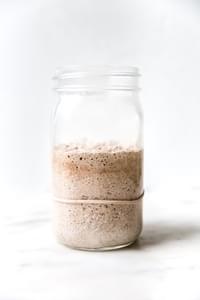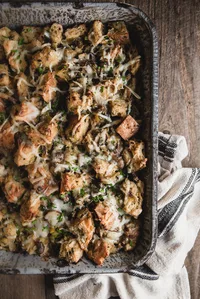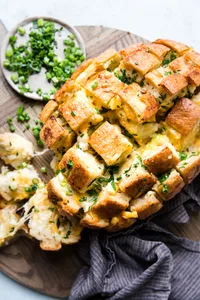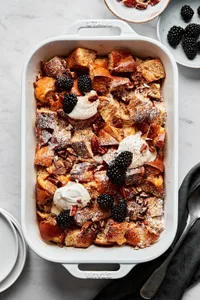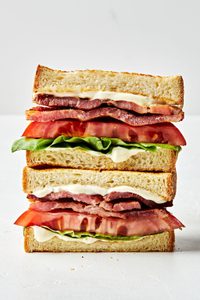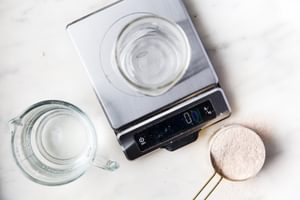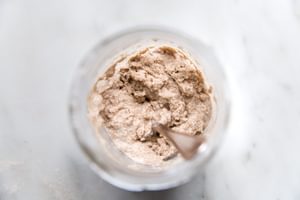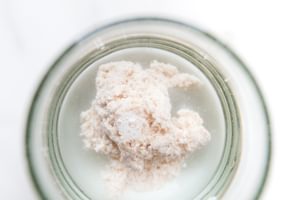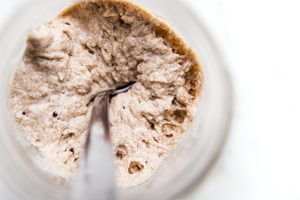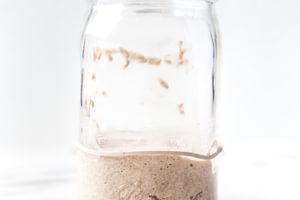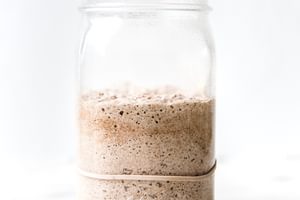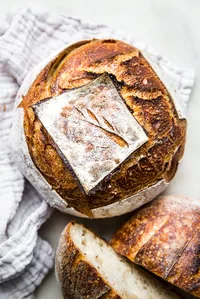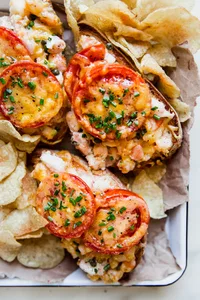How Many of Your Friends Are Making Sourdough Starter Right Now?
Learn how to make an easy sourdough starter with us! All it takes to make a sourdough starter is flour and water and some time, so you’ve probably got everything you need already. Once you’re starter is active (meaning that the wild yeasts are ready to make your bread rise) you’ll be able to use it to make a gorgeous loaf of Sourdough Bread. This will take at least a week, or maybe two, so we should get started!
Before we jump into the sourdough starter recipe, let’s take a collective deep breath. There’s a lot of lore in the bread world and TBH bread people are totally intimidating! You’ll hear words like hydration, and stuff about percentages and you might want to run for the hills! But we firmly believe that making homemade bread from scratch is for everyone. Bread is humble! It’s an ancient food that humans all over the world have been making for millennia. You can definitely do this.
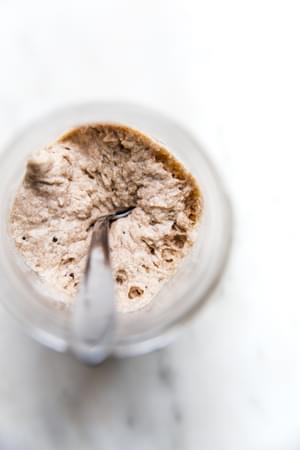
What Is Sourdough Starter?
In short, a sourdough starter is a leavener, meaning that its purpose is to make your bread rise, the same way that store bought yeast would in other non-sourdough bread recipes. What you’re doing when you make sourdough starter is encouraging wild yeasts and good bacteria to make a happy home in a simple mixture of flour and water. When your sourdough starter is ready (we’ll explain how to tell when it’s ready soon) and it’s finally time to bake a loaf, you’ll use part of your starter instead of commercial yeast. A strong, healthy sourdough starter will ensure that your loaf of bread has plenty of rise, delicious flavor, and a tender, light, airy crumb.
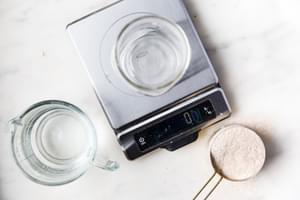
What You Need To Make Sourdough Starter from Scratch
- Flour. Regular, all-purpose flour. You’re going to need quite a lot of flour to cultivate a sourdough starter. You’ll be feeding your starter about a cup of flour a day for the first few days, and then you’ll increase to two feedings a day. So, you’ll ultimately need anywhere from 15 to 25 cups of flour to really get a starter going. We’re calling for regular old all-purpose flour, but you could use whole wheat flour instead, or even a combination of the two.
- Water. Filtered water if you can easily get it is the best.
- A jar or container. Clear glass is ideal, so that you can see growth and monitor volume changes easily. A large mason jar is perfect.
- Something to cover it with. A tea towel secured with a rubber band works well.
- A kitchen scale. Not technically 1000000% necessary, but any baker will tell you that a kitchen scale (you can find basic ones for about $10 everywhere from Target to the Amazon) is one of the best tools you can buy to ensure that your baked goods turn out. Investing in a kitchen scale will save you money (and heartbreak) in the end, because you won’t have to toss out failed baking projects!
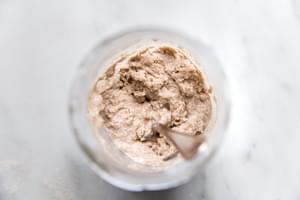
Sourdough Starter FAQs
- How long until the starter is ready to use? A lot of sourdough starter recipes say that you may notice bubbling after the first 24 hours, but that hasn’t been our experience. Two eager days into making sourdough starter, we had zero action. We reached out to friends, and heard a variety of times. Friends said: “my starter took almost a month to really get going” and “give it two weeks, at least”. Sometimes, under ideal conditions, a sourdough starter is ready to bake with in a week, but it’s normal for it to take two weeks.
- You’ll know it’s ready when the starter doubles in size within 8 hours after a feed.
- Keep your starter warm, but not hot. If your house is cool, keep it somewhere a little warm, like on top of the fridge.
- What do you mean by “cover it loosely?” We use a tea towel held on with a rubber band. You basically want the starter to be covered so that nothing yucky gets in there but you still want there to be air exchange happening.
- Filtered water is best if you can use that.
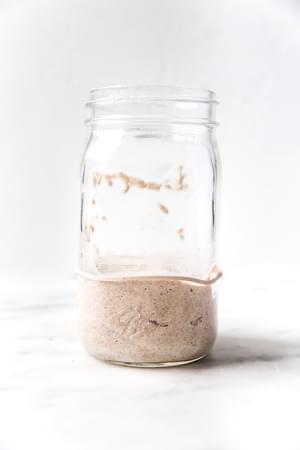
More Tips + Some Bonus Encouragement
- Sourdough starter is a leavener, and the first leavened breads ever made likely rose by accident. In his classic book On Food and Cooking, food scientist Harold McGee notes that “the earliest archeological evidence for leavened breads comes from Egyptian remains of around 4000 BCE. The first raised doughs arose spontaneously, since yeast spores are ubiquitous in the air.” In other words, sourdough starter wants to exist. We repeat: it grows by accident! With just a smidgen of intention, you surely can’t fail.
- Want to really nerd out? We love the King Arthur Flour website sourdough guide. It has a lot of information about the science of sourdough starter! You don’t HAVE to have a deep understanding of what’s going on between the wild yeasts and lactobacilli bacteria you’re cultivating in your starter that give it those exciting bubbles and such wonderful flavor but it’s kind of fun to learn about it anyway.
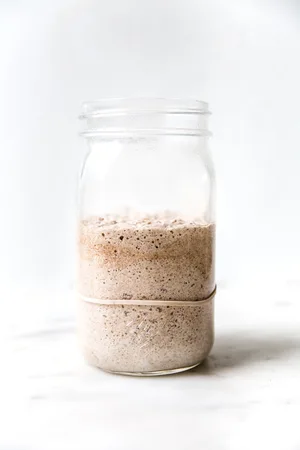
More Bread-y Recipes
Proud Of Yourself?
For more recipe inspiration, follow us on Facebook, Instagram, TikTok and Pinterest or order our cookbook. We love when you share your meals. Tag us on Instagram using #themodernproper, and we’d love to hear what you think of this recipe in the comments below. Happy cooking!
